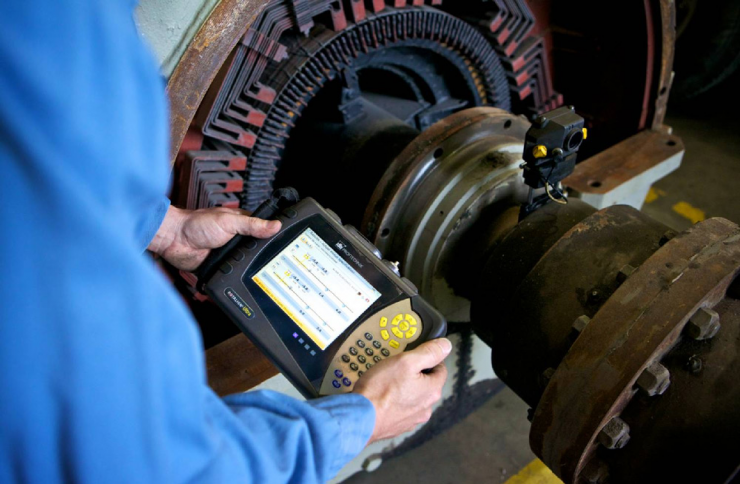As a manufacturer, wouldn’t it be amazing to be alerted before your equipment fails? Predictive maintenance is a concept that we are hearing very often in the industrial world, but which remains very difficult to understand. Few people really know how to implement it. The aim of this article is to help you understand it better, and to see the ups and downs of this concept!
Predictive maintenance, how and why?
Your customers have never been as powerful as they are today. With a single click, they can give their opinion or worst decide to replace you with one of your competitors.
Operational excellence is more than ever a factor of differentiation and success. You no longer have any other choice, maintaining the highest levels of efficiency and satisfaction while having new orders is mandatory. Hence, predictive maintenance should be high on your interest list…
This is far from being new, reducing maintenance costs has been a priority for plant managers for over 40 years! Today, it is no longer about fixing failures only, but rather about predicting them. What is called predictive maintenance is nothing more than that!
Today, at a time where customer demands are increasing and competition is becoming stronger and harder, manufacturers can no longer afford to let the threat of a breakdown float above their production.
According to a McKinsey study, savings from predictive maintenance in factories could reach $640 billion by 2025. When we know that in the automotive industry, a single hour of production line downtime can cost up to 1.3 million dollars, we easily understand how this number can be reached.
As for sectors such as air transport or nuclear, it is simply not an option to expose themselves to equipment failure…
So, how could manufacturers use predictive maintenance to be ever more competitive to meet their customers’ higher expectations?
How does it work?
Thanks to industry 4.0 technologies, data are more and more numerous, diversified and precise (to learn more, see our articles on Big data and IIoT): Predictive maintenance comes from the collection of these data.
Today, machines can extract raw data, store it and analyze it quickly at decreasing costs. Less and less expensive and often tailor-made software are now able to inject these data into dashboards, thus enabling them to be better visualized and to benefit from them.
Three types of data provide the basis for predictive maintenance:
- Environmental data: Such as temperature, humidity rate, vibrations frequency…
- Historical data: Such as breakdowns occurred, executed maintenance operations…
- Operating data: Nature of production, machine utilization rate…
By merging data from machines with each other and with data from ERPs, MESs and other management systems used in the factory, a predictive model is built. The data continuously collected feeds this model and allows the probability of a breakdown to be determined.
Predictive maintenance is therefore more than curative maintenance, which consists in repairing the machine once the breakdown has occurred, or preventive maintenance, which means establishing a cyclical schedule of maintenance operations. Predictive maintenance eliminates the costly unplanned repairs or systematic and inefficient testing operations. It is based on machine usage and real operating conditions to predict failures; the risk is thus known in real time. Then, it is up to the manufacturer to decide whether to do something or not.
What are the advantages?
First of all, predictive maintenance makes it possible to reduce breakdowns and no longer be unprepared when they occur. Reducing downtime not only saves time and money on maintenance operations but also increases flexibility and customer satisfaction by avoiding out-of-stock situations or longer delivery times.
According to a Deloitte study, in addition to reducing the operational costs for the manufacturer, predictive maintenance also increase its growth. Indeed, Operational costs are obviously reduced when employees no longer waste their time managing sudden and unexpected breakdowns. Maintenance operations are anticipated, and human resources planned, avoiding the manufacturer to pay overtime. Moreover, thanks to the anticipation of breakdowns, replacement parts requirements are planned, making it possible to control their costs of acquisition and storage.
The growth increases naturally when the manufacturer, instead of concentrating on the emergencies related to breakdowns that he must manage in his plant, can concentrate on the needs of his customers or on other strategic subjects. Predictive maintenance can, therefore, increase production quality and even lead to the emergence of new products.
So, yes! Predictive maintenance also improves customer satisfaction!
Is it necessary to invest a lot of money? What is the return on investment (ROI)?
Where we should not be mistaken, and this is a widespread belief, is that predictive maintenance does NOT necessarily require new machines and therefore, does not necessarily involve heavy investments. Indeed, most of the machines in use in the factories already collect the data, except that this data is often lost and/or neglected. To implement predictive maintenance in factories, a simple software solution may be sufficient. Whether it is the addition of new sensors, the development of analysis and data transmission software or another custom tool, the key to predictive maintenance is above all a good understanding of the manufacturer’s needs. Then the tool will adapt to those needs, not the other way around.
As there are as many solutions as there are production lines, it is difficult to quantify the ROI. However, according to Samuel Blanquet, the SAS publisher’s manufacturing referent, “manufacturers agree that ROI is noticeable after two or three years”.
This is not surprising since, as we have seen above, a minimum of data history is required to feed the system so that it functions correctly. There is, therefore, a real urgency for manufacturers to implement these solutions to benefit from them as fast as possible.
How to implement it?
At BRIDGR, we can help you define your needs and identify the right person or technology to support you in the implementation of your predictive maintenance projects.
- Start with small successes
This is part of our mantra, and it is true for all 4.0 industry projects: it is never good to rush or start with a huge investment without fully understanding the expected effects. To begin with, it is better to target the bottlenecks in the production chain, where there are the most slowdowns, and then extend the solution to other production lines and then to the entire workshop.
- Be patient
Do not expect immediate results, you might be disappointed. Before launching a project, it is necessary to take into consideration the time needed to build the prediction model. Every machine and production line is different and the tool must be given time to adapt.
- Collect the right data and understand how to analyze it
As we have seen it before, the amount of data is not what is missing in factories… So the challenge is not simply to find data but to find the GOOD data and properly analyze it. Sometimes, data collection can involve adding a sensor, but this is not always the case. Today, the biggest problem with data is that it is very often processed with “classic” software, which are not adapted to build a predictive model. Anyway, before starting a project and in order to find the right solution, you need to know what you are looking for.
- Involve your workforce
Once again, risking repeating ourselves, the industry 4.0’s biggest challenge lies in the ability to involve humans. Predictive maintenance is no exception. It may require the intervention of scientists, specialized in data, capable of developing prediction algorithms or even software, sensors or a custom solution… Whatever the case may be, the work of the scientist or the solution will only take on its full value if it is combined with the maintenance teams already in place, who know the production lines, the machines, and their weaknesses. It is also necessary to know how to reassure and explain to the workers, how their jobs will evolve.
I guess, now you see it, you can easily understand that to benefit from all the advantages of predictive maintenance, a company must start with small, well-targeted projects and involve its teams. For this, we strongly recommend involving a specialized and neutral service provider. And to not stay behind, it is necessary that manufacturers implement predictive maintenance as quickly as possible.
If you are convinced of the importance of predictive maintenance but don’t know where to start or where to go, BRIDGR is here to help you.






